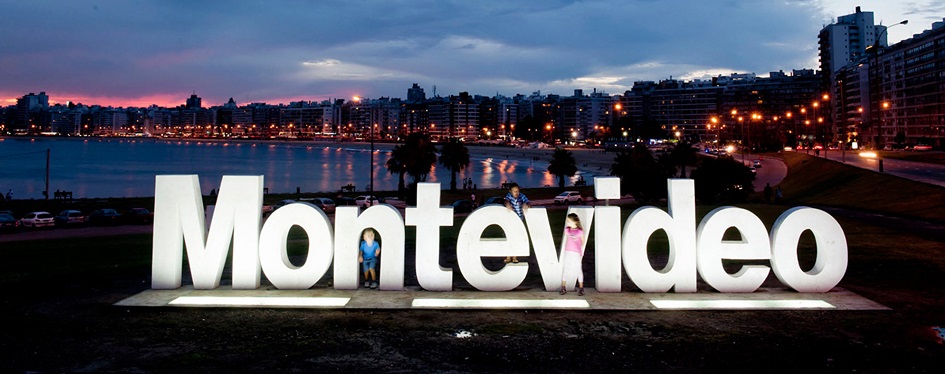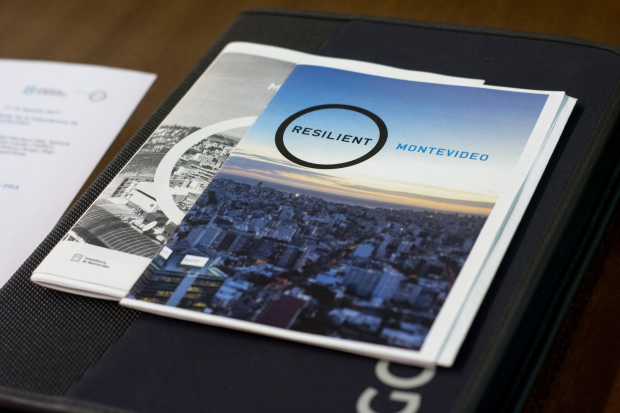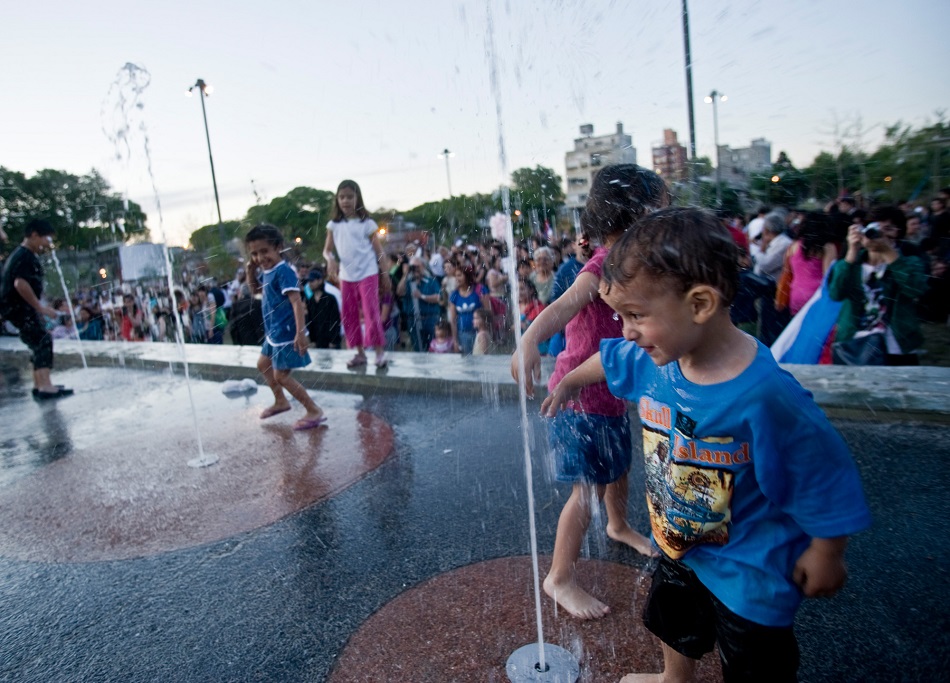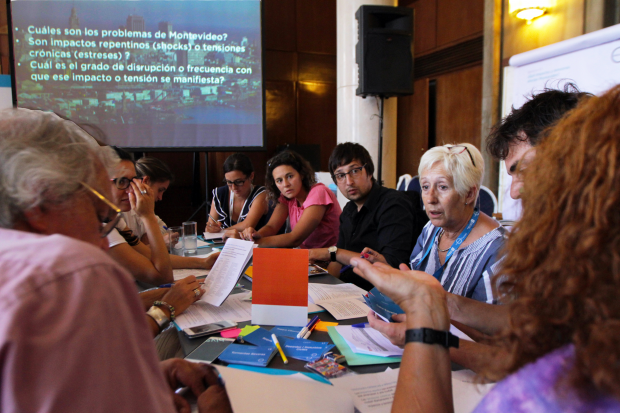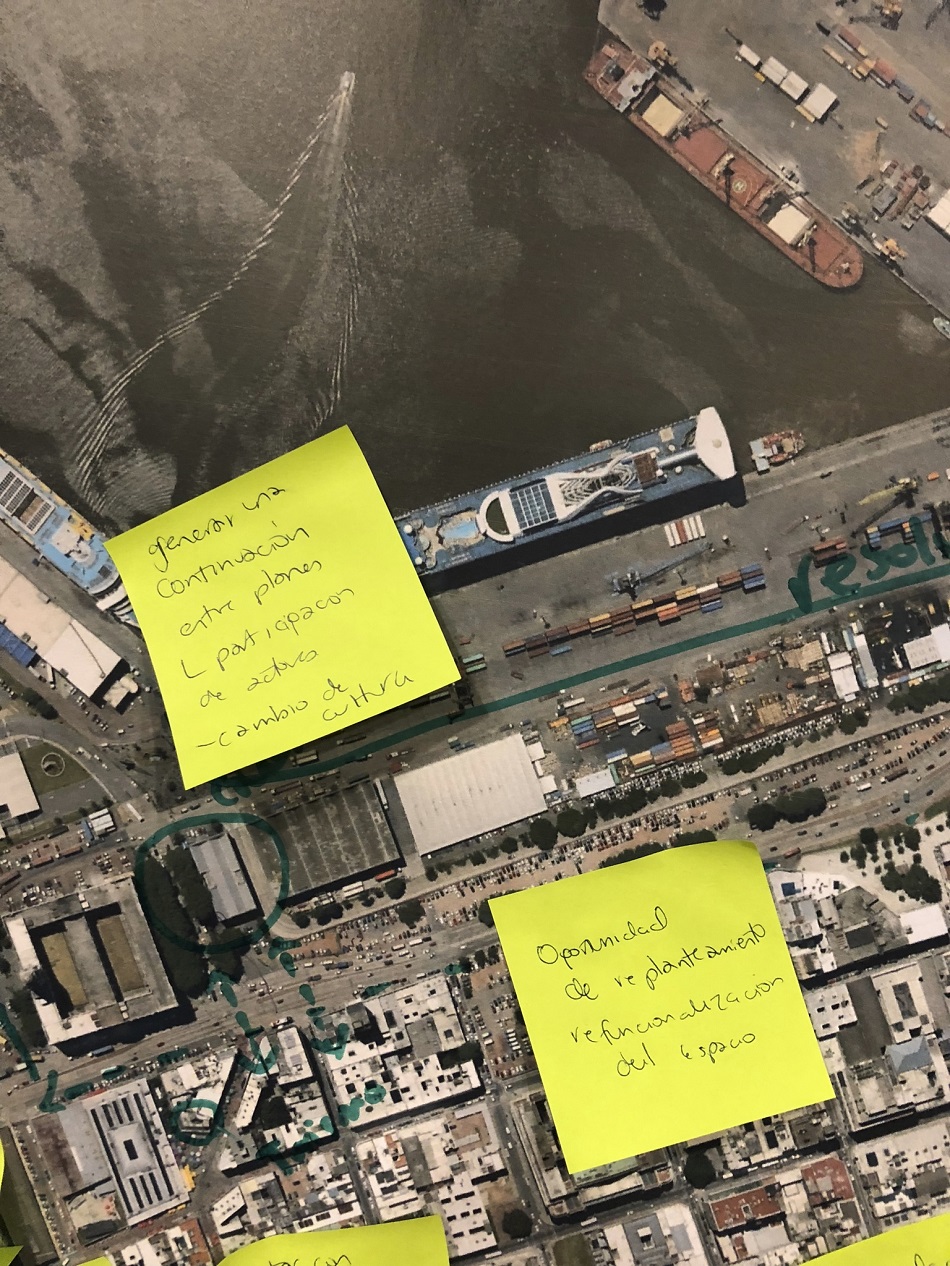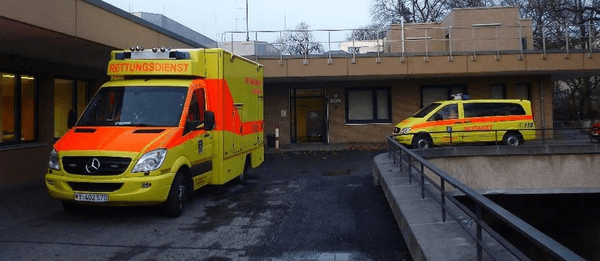Montevideo’s resilience strategy is organised into 4 pillars, 14 objectives, 45 initiatives and 3 strategic processes that we have called resilience laboratories. Together, these pillars, objectives, initiatives and laboratories contribute to developing the vision for the strategy.
Pillar A | Connected and dynamic Montevideo
Vision
Montevideo is a dynamic city that is connected to the world, the region and its metropolitan environment. It is one which makes efficient use of its territory and of its installed capacities, supported by an urban mobility system that guarantees adequate connectivity, combining different transportation means and prioritizing sustainability, promoting socio-territorial integration processes and equitable use of the territory for all of the people of Montevideo.
Objectives
A1. Control urban expansion, promoting the maximum use of consolidated areas and the revitalization of precarious central areas.
A2. Promote the public use of space for collective and operational transportation over the individual motorized vehicle.
A3. Promote the energy matrix transformation in urban mobility.
Pillar B | Inclusive and supportive Montevideo
Vision
Montevideo bases its local development on an inclusive, equitable and solidary model, centered on the human being, in which people can develop their maximum potential according to their needs and interests. It has modern participation and decision mechanisms, that are effective and innovative, designed to allow the integration of all people, respecting their diversity.
Objectives
B.1 Reverse socio-territorial segregation and guarantee access to the right to the city.
B.2 Deepen the cultural dimension of development as a driving force for integration, equity and recognition of the diversity of all inhabitants.
B.3 Strengthen public spaces as areas for social integration, citizen safety and coexistence.
B.4 Promote participation and decision mechanisms, in a transparent, effective and innovative manner.
Pillar C | Innovative and co-creative Montevideo
Vision
Montevideo is a thriving, multifaceted and enjoyable place, combining its role as a tourist capital with industries that are strongly centered on the creative capacity of its inhabitants, the access to knowledge, the commitment to innovation and the promotion of culture.
Objectives
C.1 Promote a development model that favors the circular, social and solidarity economy.
C.2 Promote individual and collective creativity as a driving force for innovation and development in sectors of the economy that are based on knowledge, culture and new technologies.
C.3 Position Montevideo as an attractive and open city, whose cultural, social and natural heritage is valued.
Pillar D | Committed and prepared Montevideo
Vision
Montevideo is a sustainable territory, which protects its coast, its water courses, its rural environment and its natural ecosystems, and manages its solid wastes in an integral way under an economic, social and environmental vision. It has empowered citizens to undertake the commitment to build an increasingly resilient territory.
Objectives
D.1 Install an environmental management that incorporates the ecosystem and basin approach.
D.2 Reduce the impact of solid waste on the environment by incorporating new management models and the best available technologies.
D.3 Value the rural territory, promoting the responsible use of its environmental services and recognising the urban-rural complementarity.
D.4 Strengthen citizen’s commitment to caring for the environment and to improve their skills in understanding, preventing and responding to risk situations, from a resilient perspective.
Laboratories are neither plans nor projects nor actions. These are resilience building processes that due to their transversality and strategic value characteristics, allow for an integral approach to the 4 pillars and contribute towards achieving Montevideo’s Resilient vision in a decisive manner.
Resilience LAB 1: Transformation of the Pantanoso stream basin
The Pantanoso stream basin is one of the territories considered strategic by the Land-Use Planning Department Guidelines. It was defined as a laboratory because it presents a multidimensional problem that articulates all of the strategy’s pillars in a territory considered strategic for developing a resilient Montevideo.
Resilience LAB 2: Integral development of the coastal territory
The coastal area by the Río de la Plata is a territory which forms part of the people of Montevideo’s identity and is exposed to numerous anthropogenic and natural pressures. It was selected as a laboratory due to the need to generate a global development project linked to the rest of the department, without neglecting its sectoral and territorial specificities.
Resilience LAB 3: Comprehensive risk management
Risk management in Montevideo has traditionally been considered under a sectoral approach focused on emergency care. Due to its relevance in building resilience, it requires the incorporation of a contemporary and multidimensional approach. It was defined as a laboratory so as to ensure that the new risk management policy meets the objectives of the 4 pillars of the strategy.
